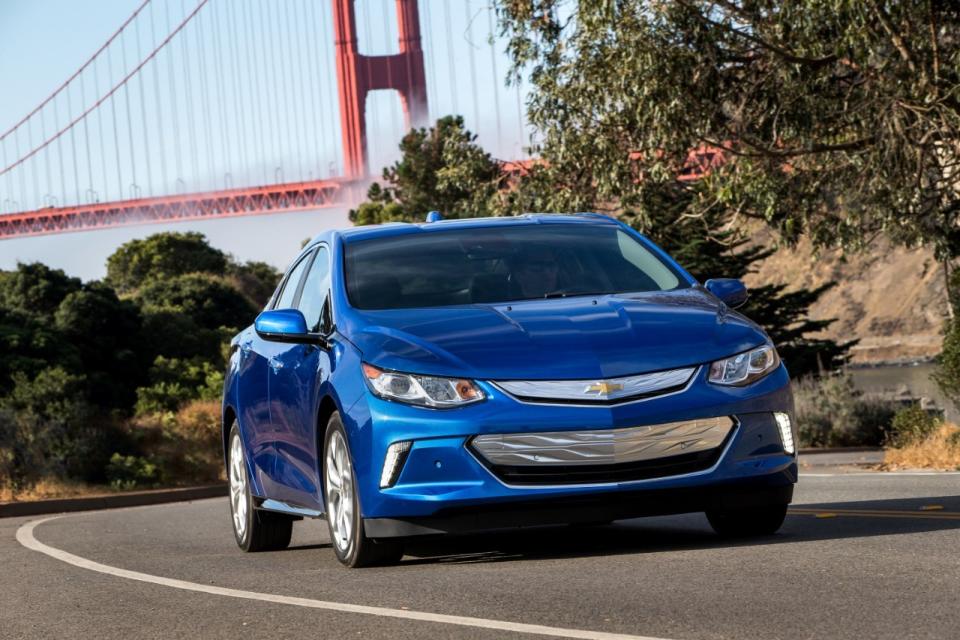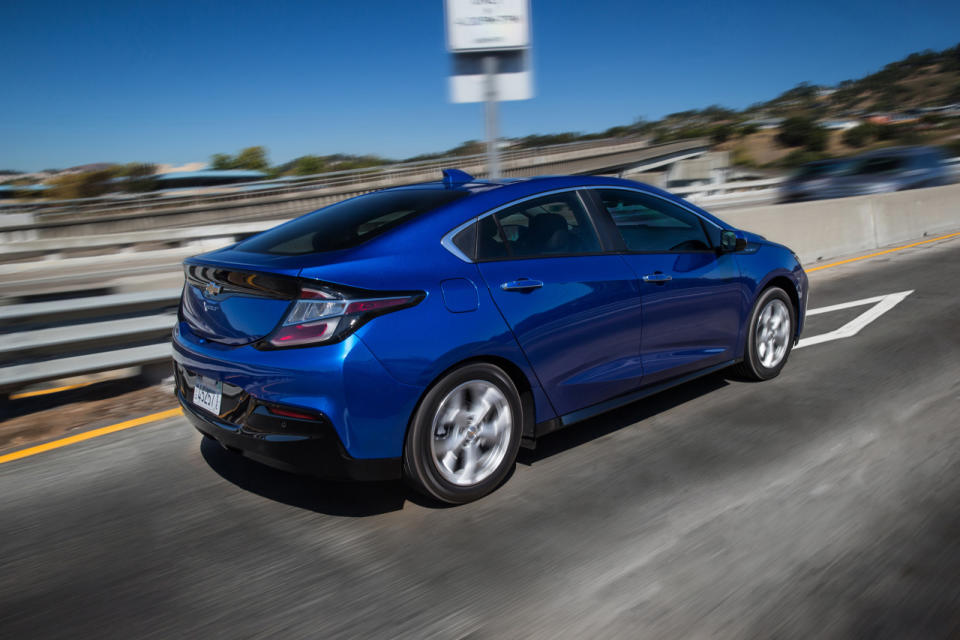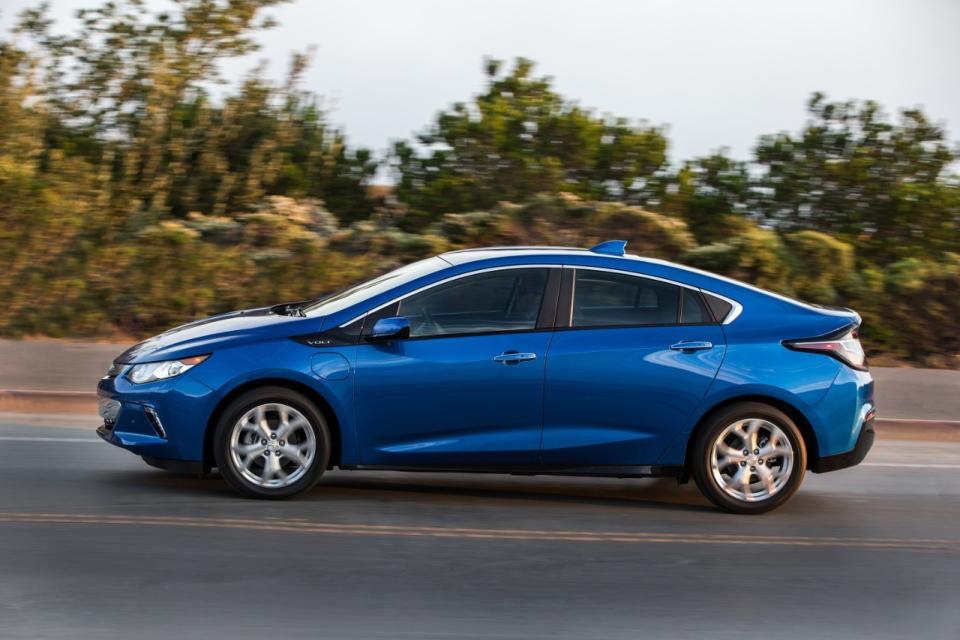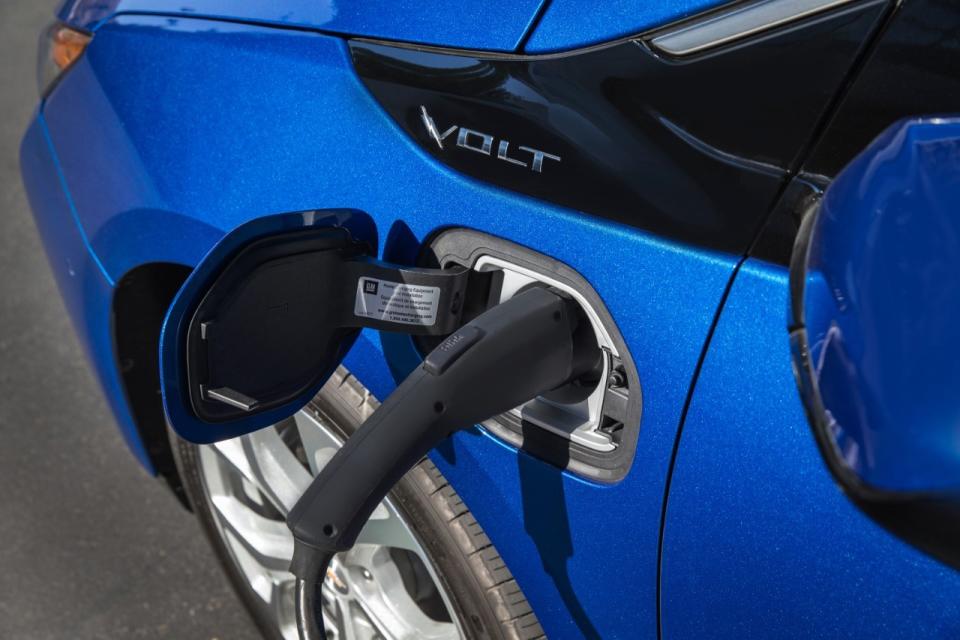2016 Chevrolet Volt: First Drive

What is it: Chevrolet Volt, four-door plug-in hybrid sedan.
Price as tested: $33,995
Competitors: Toyota Prius Plug-In Hybrid, Ford C-Max Energi
Alternatives: Toyota Prius, Ford C-Max, Tesla Model S
Pros: Tremendous fuel efficiency, electric power (most of the time)
Cons: Still costs a bundle compared to non-battery powered machines, still tight on the inside.
Would I buy it with my own money? As it sits, there’s too many conventional alternatives at far more attractive prices.

Most predictions don’t work out. If they did, we’d all be drinking New Coke at McDonald’s while chowing down on Arch Deluxes and surfing the web on Windows Vista laptops. The future is rarely what we thought it would be. And so this story isn’t about the all-new 2016 Edsel.
Instead the subject here is the second-generation 2016 Chevrolet Volt. It’s an evolutionary step forward for the pioneering plug-in hybrid that bad Old GM conceived, and brave New GM leveraged to win government backing to secure its future. The Volt has been a political tool since first appearing as a concept in 2007, but has only infrequently been evaluated as a driving machine since it entered production as a 2011 model. Over time, its novelty has faded, and it has moved from the forefront of the automotive consciousness to one to the far back burners. But it’s still around, it’s now significantly better than before, and it’s bound to excite practically no one.

Its campaign days behind it, the Volt is now a real car. And it looks more like one too. The self-consciously future-think, slab-sided style of the first Volt has been ditched in favor of a more conventional and more heavily sculptured look. Throw your eyes out of focus and rub some Vaseline on your corneas and it could be a new Hyundai or Mazda. It’s still a five-door hatchback, but more conventional from its pointed prow back across its shark fin antenna to finish up with obliquely shaped taillights. It’s good looking, but it doesn’t really stand out.

That conventionality carries into the interior uses dials and knobs that can be operated with gloved hands on a cold morning. The instrumentation consists of one eight-inch flat screen directly in front of the driver pumping out such vital information as vehicle speed and separate, centered eight-inch screen with icons that access the entertainment and communications system. Apple’s CarPlay and Google’s Android Auto will be offered to operate this part of the interface. If the demonstration offered by Chevrolet of CarPlay is indicative, prepare to be underwhelmed.
The Volt is still built atop GM’s Delta II front-drive architecture. That’s the same bones upon which is erected the plebeian Cruze economy car and Buick’s entry-level Verano. The wheelbase has grown an inconsequential 0.4-inches longer to reach a modest 106.1-inches while the overall length is up 3.3-inches to 180.4-inches. The suspension up front is an unsurprising pair of MacPherson struts while the tail floats on a solid torsion beam axle and coil springs. Ordinary stuff.
What makes the Volt extraordinary is the T-shaped battery pack running down the car’s spine and across under the rear seat. GM has dropped the number of LG-made lithium-ion cells from 288 to 192 while increasing total battery capacity—from 17.1-kilowatt/hours to 18.4. That’s enough, claims GM, to wind total all-electric range up to a full 53 miles.

What that battery pack feeds is a new pair of electric motors. Closer in size to each other than the pair used in the original Volt, they’re able to share the hauling burden more evenly between themselves and that manifests itself as a more seamless driving experience. Also, the engagement dance between those motors and the internal combustion engine that’s also aboard now includes more time when the gas burner is feeding its torque directly to the front wheels through a clutch pack.
Left on their own, the electric motors produce 149 horsepower and 294 pound-feet of torque. And it’s all delivered with a creamy smoothness that only comes with electric motors. But they’re not alone.
Also aboard is this Volt’s internal combustion engine, and it’s a much more advanced and easygoing one than the archaic lump used in the prior car. The old engine only displaced 1.4-liters, used an iron block, and wheezed out an inane 84 hp. The new engine is a 1.5-liter, all-aluminum, direct injected sweetheart running a sky-high 12.5:1 compression ratio. The first member of its engine family to make it to North America, the Volt’s new four is rated at 101 hp, and it makes that power without fuss, muss, drama or frantic revving. And, beyond all that, its lighter weight helps drop 100 lbs. from the total powertrain mass; that helps boost the combined fuel economy to 42 mpg from 37, on regular gas instead of the previous generation’s recommended premium fuel.
GM claims the new Volt weighs about 200 lbs. less than the outgoing model, and there is a lightness to how the car feels on the road. There’s no surplus of grip from the Michelin 215/50R17 all-season “Energy Saver” tires, but the Volt carries its weight low in the chassis, and that produces a sense of stability most cars in this size class can’t simulate. The steering isn’t particularly communicative, but the ride motions are well controlled, and there’s little impact harshness over road divots. GM’s chassis tuning skills have improved markedly over the past few years, and the Volt is only the latest example.

Using the “Regen On Demand” system that was introduced with the Volt’s brother, the Cadillac ELR, it’s almost possible to never use the brakes in normal driving. Just use the paddle behind the steering wheel to engage the regenerative braking system, and the car slows as the electric motors become generators to send current back into the battery pack.
The power delivery of the Volt isn’t as massive or startling as in a Tesla, but it’s still distinctly an electric experience. And for many buyers, that sensation of easygoing torque will be superior to that of a conventional combustion engine. What’s most satisfying about the Volt is how that seamless experience continues even after the battery is depleted and the gas engine kicks in. It’s virtually impossible to tell when that transition happens.
There’s still not too much room inside the Volt, even though it’s now rated to carry five people instead of four. And it’s still tough to justify its $33,995 price considering that it shares so much with the Cruze that starts down near $17,000. But the future is going to catch up with the Volt real soon.
We’re in a weird automotive moment right now. Internal combustion engines have reached a new peak in efficiency and performance, and we’re reaping those benefits right now. But just a few years from now, that won’t be enough as new fuel economy regulations kick in. The electrification of the automobile needs to blast off whether consumers or the manufacturers like it or not. The Volt is increasingly looking like GM’s head start on that job; the Mercury and Gemini preludes to the full Project Apollo effort that’s coming. And regardless of its total sales, the Volt is an impressive proof of concept that’s going to pay off big time for GM across its future product range.

 Yahoo Autos
Yahoo Autos 